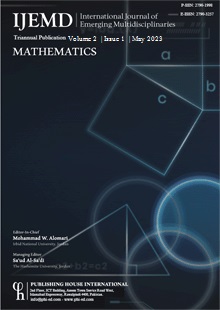Radiation Effects on Boundary Layer Flow and Heat Transfer of the Power Law Fluid Over a Stretching Cylinder with Convective Boundary Conditions
DOI:
https://doi.org/10.54938/ijemdm.2023.02.1.158Keywords:
Heat transfer; Boundary layer; Stretching cylinder; Slip condition; Similarity transformation; Convective boundary conditionAbstract
In this work, a power law fluid model is used to examine the boundary layer flow and heat transfer characteristics over an unsteady horizontal stretching cylinder under the influence of convective boundary conditions. It is presumed that partial slip conditions exist and that the thermal conductivity of the nanofluid is a function of temperature at the boundary. Through similarity transformation, the coupled partial differential equations are converted into ordinary differential equations (ODEs), which are then resolved in MATLAB with BVP4C. By contrasting the computed findings with the published results, the validity of the results is proven. The effects of different parameters on the temperature and velocity profiles are carefully looked at and analysed. As the Eckert number increases, the thermal boundary layer thickens. All of the physical factors that affect the local Nusselt number and skin friction coefficient have been studied carefully and are shown in the tables.
Downloads
Downloads
Published
How to Cite
License
Copyright (c) 2023 International Journal of Emerging Multidisciplinaries: Mathematics

This work is licensed under a Creative Commons Attribution 4.0 International License.


















